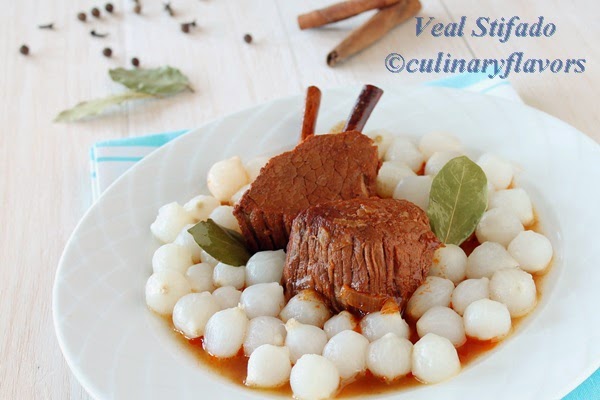Η συνταγή και στα ελληνικά στο τέλος της ανάρτησης!
Since we are heading towards Christmas and you my friends in the US are close to Thanksgiving, I thought a turkey dish was in order and I will explain why. The bond here between these two feasts is this delicious, fat, admittedly ugly in face bird called turkey.
You see, you have turkey in your Thanksgiving meal and we have exactly the same bird on Christmas Day. Truth is that this custom is not Greek. Turkeys came to Europe from New World in the 17th century by the Spanish.
Before that, people in Europe cooked big birds like pheasants, geese, ducks or peacocks for Christmas. Nevertheless, the size and the abundance of turkey’s meat made it ideal for family meals.
In Greece before the complete dominance of turkey, Christmas lunch consisted of chicken soup and or pork with leeks and other greens, something between a stew and a soup. People went to church and after a lent of 40 days, returned home ready to consume meat. In the old days families were feeding a pork until before Christmas. They knackered it and served it as a main course on Christmas Day.
Since it is easier and less time consuming process to grow a turkey, this bird has taken the place of pork and soup and today on Christmas Day most of homes, especially here in Athens, cook the turkey almost exactly as it is cooked in the US.
Nevertheless, although turkey is perfect for a big family meal, it is pretty waste for a small family or an empty nest. So, instead of having tons of leftovers that you have to try to find ways to use them, why not buying parts of turkey and cook them in a different but equally tasty way?
We are a family of three and as you can understand, if I buy the whole bird, we will be eating it, until we start to cluck. To be honest I have no problem with it, but I know a certain someone in my family, who will start to complain with an incremental tone day after day. Kids get bored very easily and cannot really understand the importance of not wasting food.
So, if you have the same problem as we do or if you want to keep the custom, but still be able to try other things as well without turkey being the predominant dish on your festive table, I strongly suggest you try this version.
Zante currants (in the United States), or currants (in other English-speaking countries), or Corinthian raisins, are dried berries of the small, sweet, seedless grape cultivar ‘Black Corinth’. The name comes from the Anglo-French phrase “raisins de Corinthe” (grapes of Corinth) and the Ionian island of Zakynthos (Zante), which was once the major producer and exporter. It is not related to black, red or white currants, which are berries of shrubs in the Ribes genus and not usually prepared in dried form. (Source: Wikipedia)
These raisins are as small as the peppercorns and they are unique in taste and sweetness. If you can find them, do try them, they are simply perfect. In case you cannot get your hands in some of them, substitute with plain raisins.
Menu 3
Appetizer
Anthotiro Mousse and Caramelized Mushrooms Canapé
Salad
Green Salad with Orange, Pines and Halloumi Cheese
Main Course
Dessert
- 1 kilo/ 2 lb. turkey in pieces or as here in net
- 1 apple, cut in small cubes
- 2 tbsp Corinthian raisins (Zante currants in US)
- 3 carrots, sliced
- 1 tsp Herbs de Province
- 1 tbsp sugar
- Fresh rosemary (a small branch)
- Fresh thyme ( a small branch)
- ½ cup white wine
- Salt and pepper
- 3 tbsp olive oil
- 2 tbsp butter
- In a deep pot sauté the turkey in the olive oil and butter.
- Add the carrots and wine.
- Add all the herbs and salt and pepper.
- Lower heat and simmer for about 30 minutes.
- Ten minutes before the end of boil preheat oven to 200°C/ 400°F.
- Ten minutes before the end of boiling add the apple.
- Five minutes before the end of boiling throw the raisins.
- Remove from fire.
- Take a pyrex or a pan and pour everything in.
- Bake for about 20 minutes or until the turkey has taken a nice somewhat golden color.
- Remove from the oven, let it rest for 5 minutes, cut the bird and serve with rice or mashed potatoes aromatized with 1 chopped scallion and 1 tbsp of dill.
- 1 κιλό γαλοπούλα σε κομμάτια, είτε όπως εδώ, στο δίχτυ
- 1 μήλο, κομμένο σε κυβάκια
- 2 κ.σ. κορινθιακή σταφίδα
- 3 καρότα, κομμένα σε φέτες
- 1 κ.γ. βότανα της Προβηγκίας
- 1 κ.σ. ζάχαρη
- Φρέσκο δεντρολίβανο
- Φρέσκο θυμάρι
- ½ φλ. λευκό κρασί
- Αλάτι και πιπέρι
- 3 κ.σ. ελαιόλαδο
- 2 κ.σ. βούτυρο
- Σε μια βαθιά κατσαρόλα σοτάρετε τη γαλοπούλα με το ελαιόλαδο και το βούτυρο.
- Προσθέστε τα καρότα και το κρασί.
- Προσθέστε όλα τα βότανα, αλάτι και πιπέρι.
- Χαμηλώστε τη φωτιά και σιγοβράστε για περίπου 30 λεπτά.
- Δέκα λεπτά πριν το τέλος προθερμάνετε το φούρνο στους 200° C.
- Δέκα λεπτά πριν το τέλος, προσθέστε το μήλο.
- Πέντε λεπτά πριν το τέλος ρίξτε τις σταφίδες.
- Βγάλτε από τη φωτιά.
- Πάρτε ένα πυρέξ ή ένα τηγάνι και ρίξτε τα πάντα μέσα.
- Ψήστε για περίπου 20 λεπτά ή έως ότου η γαλοπούλα πάρει ένα ωραίο κάπως χρυσό χρώμα.
- Βγάλτε από το φούρνο, αφήστε να ξεκουραστεί για 5 λεπτά και κόψτε το.
- Σερβίρετε με ρύζι ή πουρέ πατάτας αρωματισμένο με 1 ψιλοκομμένο κρεμμυδάκι και 1 κουταλιά της σούπας άνηθο.

